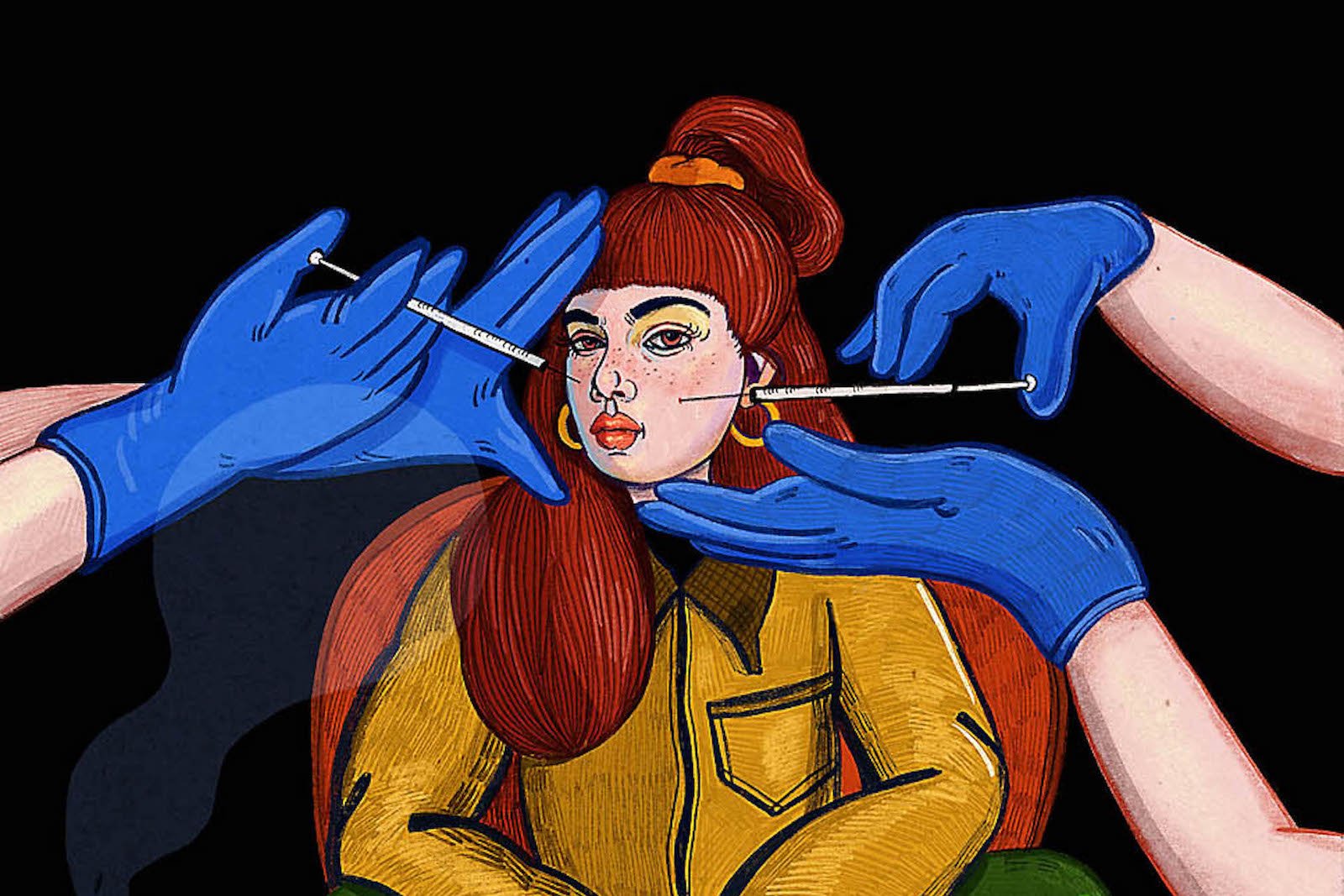[ad_1]
Exploring the Growing Trend of Injectable Skin Care: What Does it Mean for Our Age?
Whether it’s genetics or the benefits of early skin care, I’ve always looked younger than I am. Not looking my age allows for some ego boost, especially when people are surprised to hear I’m in my mid-50s. But the older I get and the wrinkles get deeper, the more difficult and at the same time easier it becomes to slow down the natural aging process. The medical and aesthetic options now available to women (and men) encompass a bewildering array of treatments for anyone with the money and the desire to sip here, poke there, and indulge in subtle, or even obvious, changes to almost to subject each part of one’s anatomy. The tools to age gracefully – some of which I use – exist, but debate still rages on if and how we should use them.
Women of a certain age can be forgiven for our confusion about how we can or should age in public. Catch the outcry over the firing of Lisa LaFlamme from CTV’s nighttime news program, allegedly because she had ‘greyed’. Imagine a toned and tanned 55-year-old Nicole Kidman on the cover of Perfect Magazine, in full victory pose with articulated muscles, a modified Vitruvian woman for the 21st century.
Women’s desire to look their best dates back thousands of years. Whether it’s rubbing crushed pearls on your face in China or thanaka powder in Myanmar, soaking in saffron-infused milk baths, or sugaring body hair in ancient Egypt, harness nature’s gift to transform the appearance and health of the skin improving is nothing new. Treatments, potions, and tonics predate Instagram and the myriad of app filters that can alter faces and blur people. But the cosmetic technology that has evolved over the last few decades has increased anti-aging use, offering the opportunity to enhance one’s appearance and go beyond ancient rituals and modern day digital filters.
Unlike long-accepted methods of altering one’s appearance by wearing braces or coloring one’s hair, facial or body treatments that can remove wrinkles or melt fat are more vulnerable — often whispered in hushed tones or not mentioned at all, even among friends. There remains a stigma of choosing aesthetic medicine to counteract the maturation of life.
Vancouver is no stranger to the art and science of using medical technology to pursue self-improvement. In 1987, Vancouver physicians Jean and Alastair Carruthers accidentally discovered the potential of Botox for use in the cosmetic beauty industry. The neurotoxin is derived from botulinum toxin, which in small doses temporarily prevents muscle contraction and reduces the appearance of facial wrinkles. By 2018, Botox was listed among the top 5 minimally invasive cosmetic treatments performed. Botox and its sister neuromodulators (including Xeomin, Nuceiva and Dysport, as well as Daxxify, which is not yet approved in Canada) have become part of a booming billion-dollar industry that includes dermal fillers; body shaping; and laser, pulsed light, and radiofrequency therapies.
The entrepreneurs behind two Vancouver beauty companies believe the future of aesthetic medicine is bright. For Andrea Greenway, an award-winning interior designer and one of the partners at Life Story, a new Kitsilano beauty bar that focuses solely on injections, choosing this cosmetic approach is about preserving skin health.
“We don’t want to be anti-aging. We want to embrace this movement of aging gracefully,” says Greenway, who used her design skills combined with the shopfitting expertise of her partner Sara Miller to create an elegant interior for Life Story’s West 4th Avenue location. The goal is to destigmatize injections and empower clients. Treatments are administered by Medical Director Dr. Nicole Redding and her team performed. Redding focused on family medicine before adding dermatology to her practice. “We want guests to walk as well as possible, look good and be proud of how they look and feel,” she notes.
Jessica Walsh, a British expat and founder of Formula Fig, approaches beauty from an experiential skincare perspective. Formula Fig (formerly Fig Face) opened in Vancouver’s Kitsilano neighborhood in 2019 and has four locations in Canada (Los Angeles is scheduled to open in December). It offers facials and doctor-supervised medical injections, called stingers, in facilities with lush pink, green, and gold interiors.
“It’s about making people comfortable and comfortable in their own skin,” says Walsh, who works in finance and fashion in London. “Good skin health is key from the start.”
Mental health education and screening are important to Dr. Kristy Bailey, Medical Director and Founder of FCP Dermatology in Toronto. Although Life Story and Formula Fig employ trained medical personnel to administer neuromodulator treatments, the injectable drug industry is unregulated in Canada. Anyone can take a weekend class and start wielding a syringe.
“It’s scary when you look at the side effects like blindness and necrosis,” says Bailey. She often lectures with fellow injectors and is shocked at how little they know about basic facial anatomy. She also conducts mental health research before giving patients injections and believes that cosmetic injections, when used properly, should replace only what is lost over time. “You shouldn’t be able to tell the person they’ve done something just that they look good for their age or rested.”
Countries like the UK and Australia are struggling to regulate the boom in aesthetic medical treatments, and Bailey hopes Canada will work similarly to pass stricter regulations requiring only one doctor to give injections.
The psychological aspects of playing with one’s appearance have also raised concerns among mental health professionals. dr Shimi Kang, a psychiatrist and clinical associate professor at the University of British Columbia, worries about the reasons people choose to stunt the natural aging process. “Using cosmetic injections could improve a patient’s mood and anxiety as they are more satisfied with their appearance,” she suggests. “It’s kind of an appropriate use, but there’s a lot of abuse and overuse.”
She continues, “I would say that people with underlying anxiety, particularly OCD or what’s known as body dysmorphic phobia, can really get into trouble, with negative consequences: their own health care costs, how much time they spend on it, outcomes they don’t are satisfied. It’s like an addiction.”
Kang also wonders if middle-aged and older women really are the industry’s target audience. “You say ‘age with grace’. I think it’s actually aimed at younger people,” she says. “The question is also whether aging needs to be prevented as it is something natural in terms of fear, connectedness and self worth. That is also part of it.”
Kang’s observation is echoed by Walsh, who says the customers who come to Formula Fig range in age from mothers who come with their daughters (and sons) to young professionals who get injections and older customers who receive facials. For Walsh, that’s a positive — a sign that her service speaks more to a mindset than to a specific demographic.
As cosmetic injections become more popular, a safe and regulated industry is in everyone’s best interests. Growth is paramount for entrepreneurs Greenway, Miller and Walsh. She and her investors want to scale their businesses beyond metropolitan Vancouver and eventually expand throughout Canada, the United States and beyond.
“Our customer is anyone with skin,” says Walsh, noting the time has come to break down stereotypes and ultimately put the choice in the consumer’s hands or face.
As for my own face, I continue to take a little help from my cosmetic injectable friends. I do not regret having decided to use medically supervised aesthetic treatments in the last two years. It worked well to smooth out the more obvious facial lines. But I will continue to wear my laugh lines with pride and grace.
Read more from our Winter 2022 edition.
[ad_2]
Don’t miss interesting posts on Famousbio










